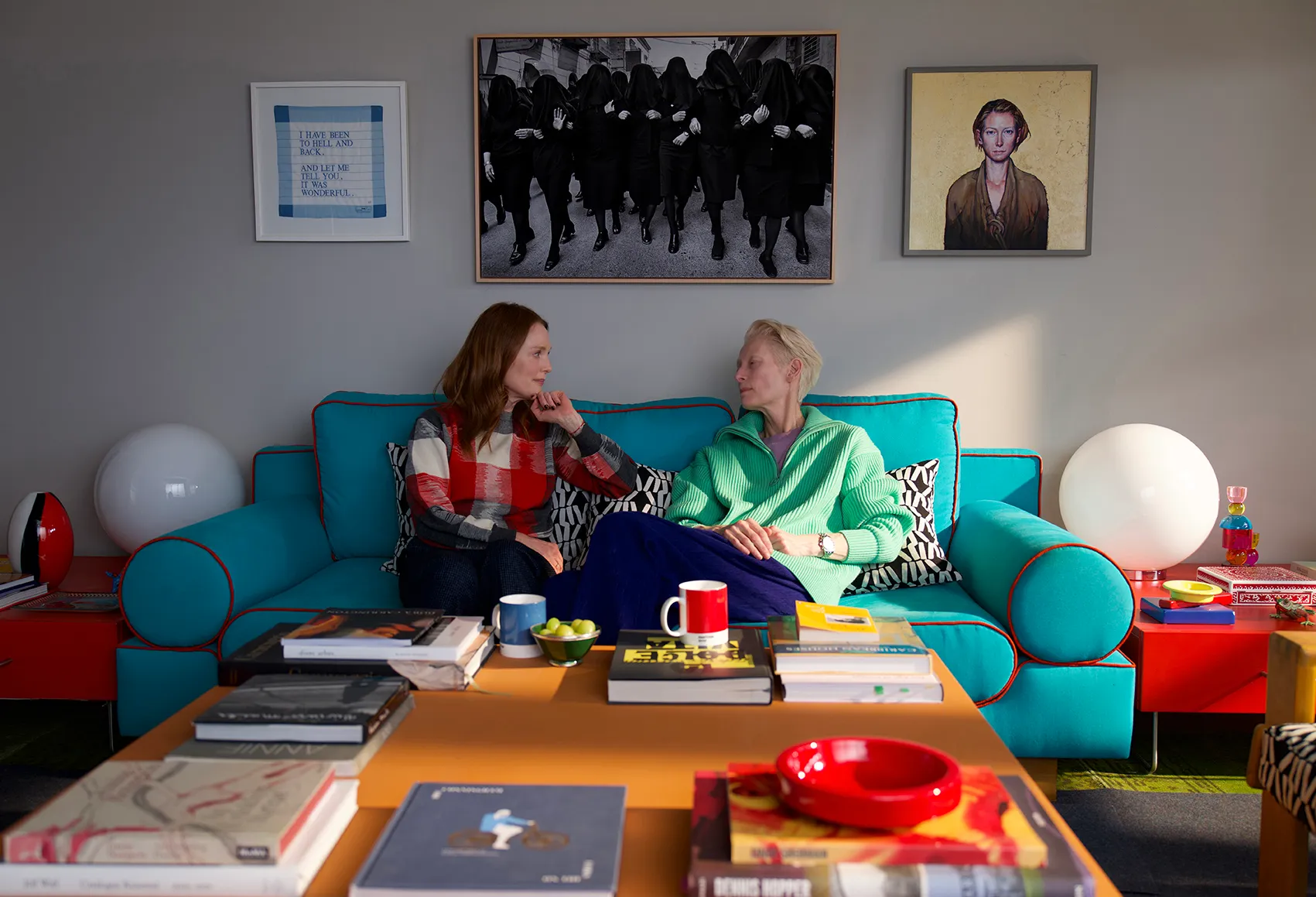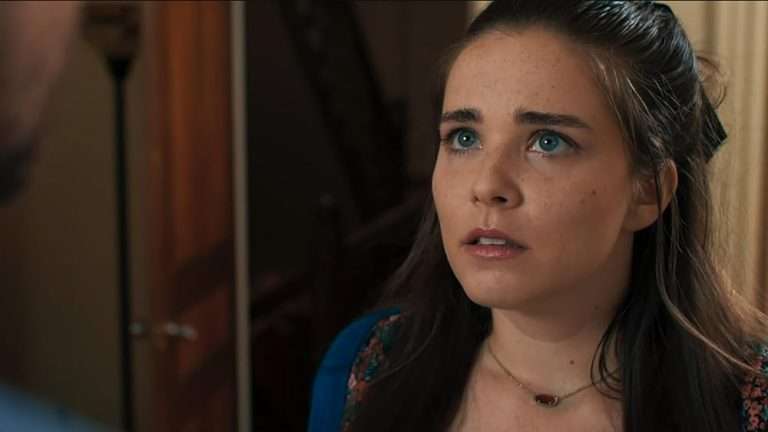If there’s one thing I’ve learned from Almodóvar’s cinema, it’s that tough love leaves an illuminating and longer-lasting echo. Pedro Almodóvar, now 75 (not that age matters much, but what’s worth noting is his remarkable 50-year career as an active filmmaker), must have found the light in Ingmar Bergman’s work at some point recently. There’s nothing wrong with that, of course.
After all, Bergman came before the filmmakers of Almodóvar’s generation, and frankly, he explored it all: the intricacies of the female psyche (check), the confrontation with inner demons and existential dread (check), and even the psychological unraveling of human struggles led by female characters set in secluded villas deep in the woods (check). On a technical level, we can also credit Bergman for teaching us the subtle art of using bold color to its fullest potential in a shot or perfecting how to fit two faces into a single close-up.
What’s peculiar here is that Almodóvar, a director who has mastered the aesthetics of vibrant palettes and explosive female temperaments, seems to have taken a different path with his latest film. It’s not entirely a departure from his signature style—one that has personally shaped my look at films and taste in life, significantly—but it’s distinct enough to be distressing (at least for us the fans). This divergence leads me to believe that Almodóvar, after 50 years in the industry, might have switched his insecurity tab on and started recording, but hopefully not in panic.
“The Room Next Door” is a comedic drama led by Julianne Moore (Ingrid) and Tilda Swinton (Martha), two faces that the camera embraces with comfort and adoration (I mean this as an overarching fact that exceeds this film in particular). Neither actress overacts, which is a relief given the potential for overblown dramatics from each of them, let alone them together; their restraint is greatly appreciated. Thank you both. Yet, somehow, they don’t quite fit together on screen, at least not as effortlessly as one might expect. Or perhaps the issue lies in their lines. The dialogues often slip into tactfulness, resulting in awkward exchanges and, in between those, fragments of seconds that make your eyes stare unsatisfied or (fate forbid) roll. When paired with the familiar swell of violins—a staple in Almodóvar’s films—the tone becomes reharmonized, though it treads dangerously close to caricatures.

Almodóvar has always used music to amplify the emotional beats of his films, but here, the score seems to underline the film’s struggle to find its footing. The violins, while dramatic, feel almost like an attempt to mask the weaker, less cohesive elements of the narrative. And while I’ve been thankful for those violin moments every time they’d pop up, they’d still feel like a short retrospective tribute to his mannerisms. Come to think of it, this is his first English-speaking movie, and as such, a Latin American soundtrack would fit rather like a third wheel; that’s anyhow how his music tunes would introduce a heartfelt narrative layer— but here would be misaligned with the film’s setting and tone. This would not be a good choice since Ingrid and Martha have just reconnected over their long-standing but recently strained friendship, all in the context of Martha’s terminal illness.
Together, they confront the thorny subject of “assisted suicide”—referred to as “euthanasia” in the film, though erroneously so. They are actually both processes covered by the term “assisted dying,” but assisted suicide does not always imply the involvement of a medical professional, and is often illegal—look it up, it’s surprisingly simple but legally complex. In the meantime, the two characters are eating strawberries and taking melancholic strolls through nature, mentally or literally. (Sound familiar?)

All jokes aside, the film had a lot of potential, particularly in exploring themes of death and the mortality of our bodies, our names, and our worldly success. Yet, somehow, the camera seemed more interested in capturing random details, vibes like lingering on a well-framed ankle shot. Perhaps because of this, I found myself distracted by a glaring flaw in the film’s palette. While the blue and red hues worked well enough, the pinks and blues were utterly disastrous—out of sync and out of time. For what it’s worth, and to make this argument complete, I think the film would have benefitted from more orange and yellow tones.
On a brighter note, Almodóvar clearly isn’t done exploring his eternal theme of flawed yet resourceful motherhood. However, in this film, motherhood takes a quieter, more subdued role, almost lurking in the background while—surprisingly—becoming a source of satire. For a filmmaker whose career has been built on delving deep into the complex, almost Greek-tragedy-like dynamics of mother-child relationships, this shift is, at the very least, a point to be made. Fine.
After all, this film was not entirely Almodóvar’s brainchild but based on a novel (for the record, What Are You Going Through by Sigrid Nunez.) So no hard feelings, only touch love.


![Vampires [1998] Review: Style. Swag. Savagery.](https://79468c92.delivery.rocketcdn.me/wp-content/uploads/2019/09/vampires-cover-1-768x432.jpg)



